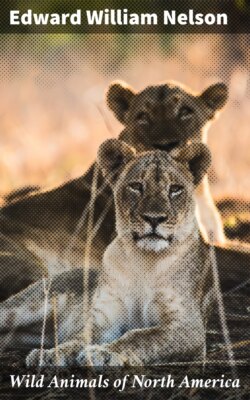Читать книгу Wild Animals of North America - Edward William Nelson - Страница 24
На сайте Литреса книга снята с продажи.
JAGUARUNDI CAT, OR EYRA (Felis cacomitli and its subspecies)
ОглавлениеTable of Contents
The eyra differs greatly in general appearance from any of our other cats, although it is one of the most characteristic of the American members of this widely spread family. It is larger than an otter, with a small flattened head, long body, long tail, and short legs, thus having a distinctly otterlike form. It is characterized by two color phases—one a dull gray or dusky, and the other some shade of rusty rufous. Animals of these different colors were long supposed to represent distinct species, but it has been learned not only that color is the only difference between the two, but also that the two colors are everywhere found together, affording satisfactory evidence that they are merely color phases of the same species.
MOUNTAIN LION
JAGUAR
RED AND GRAY PHASES OF THE JAGUARUNDI CAT, OR EYRA
TIGER-CAT, OR OCELOT
The eyra is a habitant of brush-grown or forested country, mainly in the lowlands, from the lower Rio Grande Valley of Texas south to Paraguay. In this vast territory it has developed a number of geographic races.
In southern Texas, where it is often associated with the ocelot, the eyra lives in dense thorny thickets of mesquites, acacias, ironwood, and other semitropical chaparral in a region of brilliant sunlight; but farther south it also roams the magnificent forests of the humid tropics, in which the sun rarely penetrates. It appears to be even more nocturnal and retiring than most of our cats, and but little is known of its life history. The results of thorough trapping in the dense thorny thickets near Brownsville, Texas, indicate that it is probably more common than is generally supposed.
The natives in the lowlands of Guerrero, on the Pacific coast of Mexico, informed me that the eyra in that region is fond of the vicinity of streams, and that it takes to the water and swims freely, crossing rivers whenever it desires. Its otterlike form goes well with such habits, and further information may prove that it is commonly a water-frequenting animal. Its unusual form and dual coloration and our lack of knowledge regarding the life of the eyra unite to make it one of the most interesting of our carnivores.
